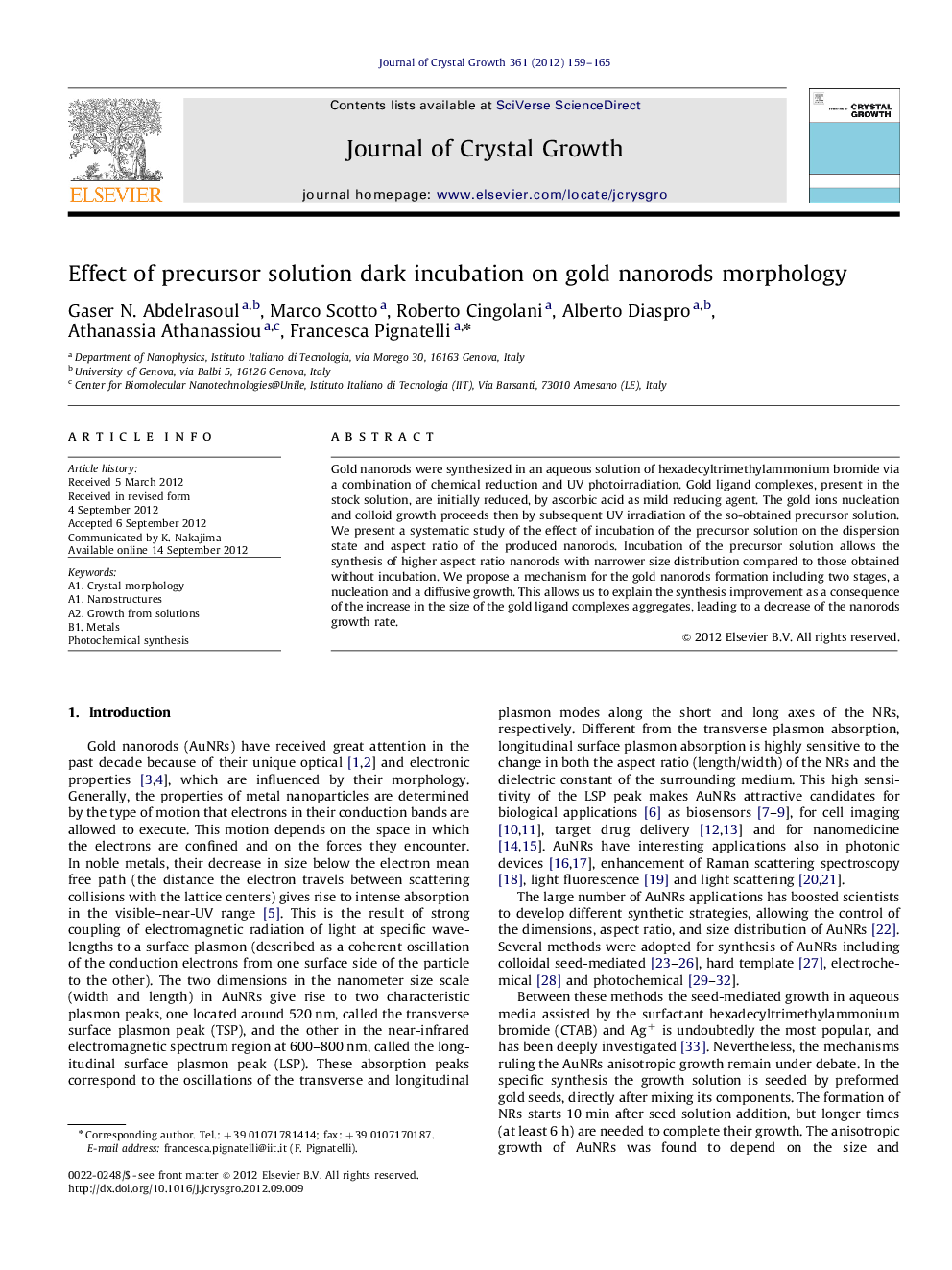| Article ID | Journal | Published Year | Pages | File Type |
|---|---|---|---|---|
| 1791415 | Journal of Crystal Growth | 2012 | 7 Pages |
Gold nanorods were synthesized in an aqueous solution of hexadecyltrimethylammonium bromide via a combination of chemical reduction and UV photoirradiation. Gold ligand complexes, present in the stock solution, are initially reduced, by ascorbic acid as mild reducing agent. The gold ions nucleation and colloid growth proceeds then by subsequent UV irradiation of the so-obtained precursor solution. We present a systematic study of the effect of incubation of the precursor solution on the dispersion state and aspect ratio of the produced nanorods. Incubation of the precursor solution allows the synthesis of higher aspect ratio nanorods with narrower size distribution compared to those obtained without incubation. We propose a mechanism for the gold nanorods formation including two stages, a nucleation and a diffusive growth. This allows us to explain the synthesis improvement as a consequence of the increase in the size of the gold ligand complexes aggregates, leading to a decrease of the nanorods growth rate.
► Role of the surfactant in helping the anisotropic growth of gold nanorods. ► Influence of size of the gold precursor reservoirs on the synthesis mechanism. ► Kinetic mechanism of growth of gold nanorods after nucleation, adding further insights to previous works.
